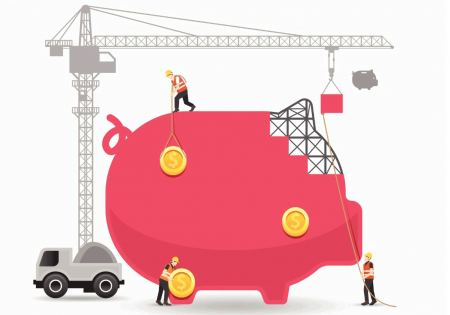Never miss a story — sign up for PLANADVISER newsletters to keep up on the latest retirement plan adviser news.
$2 Trillion Stimulus Seen as ‘First Step’ to Fighting Recession
The real question as to when the economy will begin to recover, investment managers say, is when we can contain the coronavirus.
The $2 trillion stimulus package that the federal government is pumping into the U.S. economy should help to significantly ease an inevitable “coronavirus recession,” investment managers say. However, they are quick to add, shoring up the economy, getting businesses back on track and having consumers who are confident enough to shop again will depend on how effectively the nation is able to contain and eventually eradicate the coronavirus.
“The monetary and fiscal stimulus will go a long way in lessening the impact of a recessionary period,” says Tom Stringfellow, president and chief investment officer at Frost Investment Advisors. “To put a floor under the market downturn and the cessation of businesses required Herculean efforts by governments and central banks across the globe. They have given lifelines to individuals who didn’t have sufficient savings to ride this out—people living paycheck to paycheck.”
More aid is going to be required, but the stimulus packages will provide both short- and intermediate-term funding for individuals and companies of all sizes, Stringfellow observes.
Alan Green, associate professor of economics at Stetson University in central Florida, thinks that despite the Coronavirus Aid, Relief and Economic Security (CARES) Act, the country is most likely headed for a recession.
“The CARES Act will diminish the recession somewhat, but averting a recession entirely appears very unlikely at this point,” Green says. The unemployment rate is at 20%, which is higher than the peak rate after the Great Recession of 2008, he notes. “Further, the economy will be limited by the virus until there is a vaccine.”
Stringfellow also says we need to have some certainty that the coronavirus has been contained before the economy can start to recover. “Monetary support will ensure there is liquidity in the markets and that credit channels are functioning,” he says. “Fiscal policy initiatives will provide income support. But for things to stabilize, investors will require some certainty that the virus has been contained. While implementation of historic levels of monetary and fiscal policies should help reignite the market’s recovery, it will still depend on the last leg of the economic support system—health care outcomes. As of now, that last leg is still missing.”
Chad Glauser, founder and portfolio manager at Alpine Quantitative Investment Fund, echoes those sentiments.
“It’s impossible to estimate how much the stimulus will help avert a recession because we don’t know how the virus will play out in the future,” Glauser says. “Without a known cure for COVID-19, the variables are too great to know where the market is going in the future.”
For the economy to revive, consumers will need to be comfortable shopping, says Tim Speiss, co-leader of EisnerAmper’s personal wealth group. “We really don’t know how strongly purchasing behavior will return, and we are not even talking about an official U.S. opening date,” Speiss says.
As far as where Green sees investment opportunities, he says, “Demand is already surging for specific medical equipment. In the next phase of the pandemic, people may need to wear masks in public, and testing will need to expand dramatically, so those industries will remain in high demand. Obviously, home entertainment and streaming are two of the few areas doing well right now.”
Speiss says there are good investment opportunities in companies that are aggressively researching a vaccine and that are manufacturing testing kits—“but these are all short-term plays.”
You Might Also Like:
Amid the Pandemic, Advisory Industry Enjoyed Record Demand
A Markedly Positive Mid-Year Market Check-In

Health, Family, Purpose, Finances: ‘The New Four Pillars of Retirement’
« PCS Retirement and Aspire Offer Fee Credits for Loans and Hardship Withdrawals